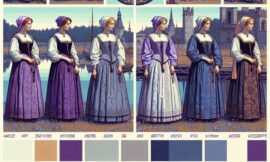In the rich tapestry of art, countless techniques have emerged over centuries, each offering artists unique ways to convey depth, emotion, and perspective in their work. One such technique is underpainting, an essential yet often understated element in the creation of a masterpiece. Though it might be hidden beneath the final layers of paint, the role underpainting plays in developing a painting is profound and multifaceted. This blog post dives deep into the purpose of underpainting, its varied approaches, and how it serves as the foundational bedrock on which great art is built, seamlessly connecting with both traditional art collectors and digital art enthusiasts.
The Historical Purpose of Underpainting
Underpainting in Classical Art
In classical art, underpainting served as the preparatory sketch composed directly on the canvas. Renowned artists like Caravaggio and Titian utilized it to outline their compositions and establish initial tonal values. This layer helped artists visualize the distribution of light and shadow, vital for achieving the dramatic effects revered in the Baroque era. The use of chiaroscuro, a technique of strong contrasts between light and dark, greatly benefited from strategic underpainting, helping define the mood and emotional intensity of a piece.
Evolution Through the Ages
As art evolved, so did the approach to underpainting. Impressionists took a more liberated stance, focusing less on precision and more on capturing light and color. Artists like Claude Monet adapted underpainting to suit their needs, laying the groundwork for the ethereal study of contrasts and reflections as seen in works like ‘Water Lilies.’ This shift allowed paintings to evolve from mere representations to explorations of atmosphere and emotion, showcasing the versatility of art techniques centered around underpainting.

Approaches to Underpainting
Grisaille Technique
The Grisaille technique involves creating a monochromatic underpainting, typically using shades of gray, before applying color. This technique was favored in academic traditions, allowing artists to concentrate on form and volume without the distraction of color. By ensuring a coherent tonal range from the outset, painters could then apply glazes of color with confidence, building upon a robust tonal foundation that enhanced the depth and realism of the final image.
Colored Underpainting
Alternatively, some artists employ colored underpaintings using an earth-toned wash such as burnt sienna or umber. This method not only establishes basic structure and shapes but also serves to unify the color scheme of the painting. By setting a warm or cool undertone, artists like Johannes Vermeer ensured harmony throughout the composition. This coloring beneath the final layers influences the painting’s overall mood, subtly affecting the perception of the viewer.
Technical Contributions of Underpainting
Establishing Composition and Perspective
Through the meticulous laying down of essential elements, underpainting first addresses issues of composition and perspective. Artists define the structural integrity of their work at this stage, resolving spatial dilemmas. Whether it is a sprawling landscape or an intimate portrait, underpainting aids in plotting the narrative flow, ensuring all key elements coalesce into a coherent visual story.
Enhancing Texture and Depth
Beyond mere structural assistance, underpainting imbues artwork with an intrinsic texture and depth. Subsequent layers of paint interact with the underpainting, allowing for complex interplay between hues and values. This technique not only helps convey the illusion of depth but also enriches tactile qualities, inviting viewers to immerse themselves in the layers of pigment and meaning.
Underpainting in Modern and Digital Art
Continuity in Contemporary Practices
In modern art, underpainting remains a pivotal element. While techniques and materials have diversified, the foundational role of underpainting persists. Contemporary artists like Gerhard Richter employ underpainting to investigate the dynamism of abstraction. By laying down expressive underlayers, artists provide not just support for the final image but also a hint at the conceptual depth beneath the surface.
Adapting Underpainting for Digital Media
With the advent of digital art, traditional techniques segue into new mediums, and underpainting finds relevance even here. Digital artists utilize preliminary layers to chart out compositions and visual values before refining details. Software tools emulate classical underpainting techniques, ensuring that digital artworks carry a lineage of art history into futuristic canvases. This continuum speaks to the adaptability and necessity of underpainting across all artistic forms.
The Artistic Impact of Underpainting
Influence on Color Dynamics
Underpainting’s influence on color dynamics coalesces with light manipulation to create works that resonate with vibrancy. The juxtaposition of color and shadow laid out in the underpainting stage invites a symphony of visual contrasts when the final hues overlay, akin to a musical composition where every note is anticipated yet surprising.
Expressing Emotion and Atmosphere
Moreover, underpainting serves an emotional function, enabling artists to pre-visualize the essence of their vision. By working through initial layers, artists tap into the emotional narrative that guides the viewer’s journey through the painting. The layers may be unseen in the finished piece, but the emotions embedded in the groundwork resonate powerfully, ensuring underpainting’s silent yet profound contribution to the artwork’s emotional gravity.
Though often overlooked, the significance of underpainting in the fabric of a painting cannot be overstated. It functions as the bedrock upon which the visible layers can thrive, infusing the artwork with depth, structure, and coherence. From classical traditions to modern innovations, underpainting remains a linchpin in the artistic process, underscoring its timelessness and adaptability. Whether in the hands of old masters or digital pioneers, this essential technique continues to affirm its place at the heart of creative expression, bridging the gap between artists and their audiences across eras and mediums.






